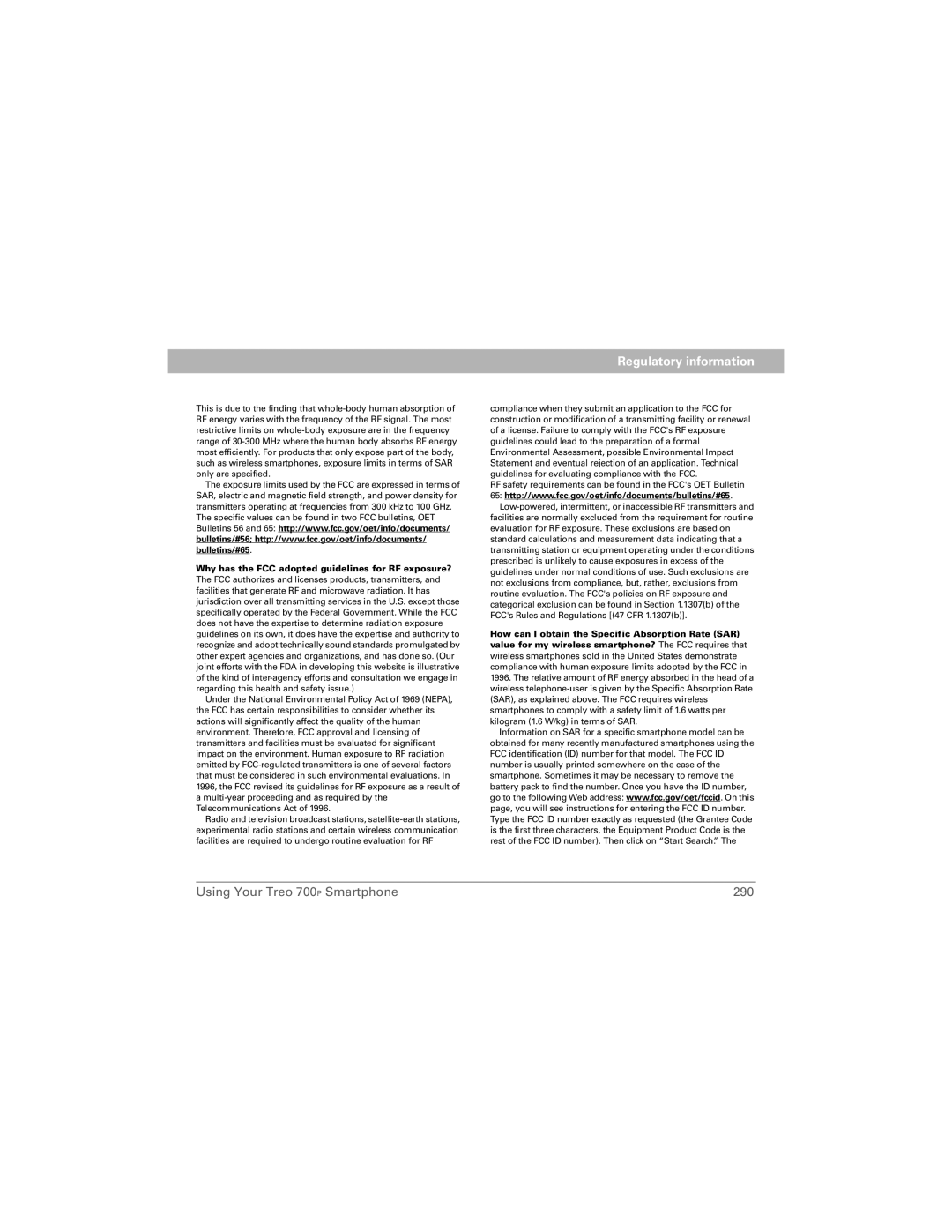
Regulatory information
This is due to the finding that
The exposure limits used by the FCC are expressed in terms of SAR, electric and magnetic field strength, and power density for transmitters operating at frequencies from 300 kHz to 100 GHz.
The specific values can be found in two FCC bulletins, OET Bulletins 56 and 65: http://www.fcc.gov/oet/info/documents/
bulletins/#56; http://www.fcc.gov/oet/info/documents/ bulletins/#65.
Why has the FCC adopted guidelines for RF exposure? The FCC authorizes and licenses products, transmitters, and facilities that generate RF and microwave radiation. It has jurisdiction over all transmitting services in the U.S. except those specifically operated by the Federal Government. While the FCC does not have the expertise to determine radiation exposure guidelines on its own, it does have the expertise and authority to recognize and adopt technically sound standards promulgated by other expert agencies and organizations, and has done so. (Our joint efforts with the FDA in developing this website is illustrative of the kind of
Under the National Environmental Policy Act of 1969 (NEPA), the FCC has certain responsibilities to consider whether its actions will significantly affect the quality of the human environment. Therefore, FCC approval and licensing of transmitters and facilities must be evaluated for significant impact on the environment. Human exposure to RF radiation emitted by
Radio and television broadcast stations,
compliance when they submit an application to the FCC for construction or modification of a transmitting facility or renewal of a license. Failure to comply with the FCC's RF exposure guidelines could lead to the preparation of a formal Environmental Assessment, possible Environmental Impact Statement and eventual rejection of an application. Technical guidelines for evaluating compliance with the FCC.
RF safety requirements can be found in the FCC's OET Bulletin
65:http://www.fcc.gov/oet/info/documents/bulletins/#65.
facilities are normally excluded from the requirement for routine evaluation for RF exposure. These exclusions are based on standard calculations and measurement data indicating that a transmitting station or equipment operating under the conditions prescribed is unlikely to cause exposures in excess of the guidelines under normal conditions of use. Such exclusions are not exclusions from compliance, but, rather, exclusions from routine evaluation. The FCC's policies on RF exposure and categorical exclusion can be found in Section 1.1307(b) of the FCC's Rules and Regulations [(47 CFR 1.1307(b)].
How can I obtain the Specific Absorption Rate (SAR) value for my wireless smartphone? The FCC requires that wireless smartphones sold in the United States demonstrate compliance with human exposure limits adopted by the FCC in 1996. The relative amount of RF energy absorbed in the head of a wireless
Information on SAR for a specific smartphone model can be obtained for many recently manufactured smartphones using the FCC identification (ID) number for that model. The FCC ID number is usually printed somewhere on the case of the smartphone. Sometimes it may be necessary to remove the battery pack to find the number. Once you have the ID number, go to the following Web address: www.fcc.gov/oet/fccid. On this page, you will see instructions for entering the FCC ID number. Type the FCC ID number exactly as requested (the Grantee Code is the first three characters, the Equipment Product Code is the rest of the FCC ID number). Then click on “Start Search.” The
Using Your Treo 700P Smartphone | 290 |
